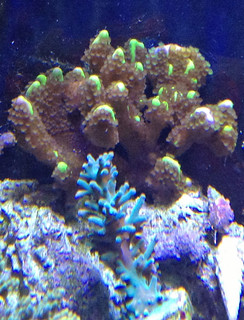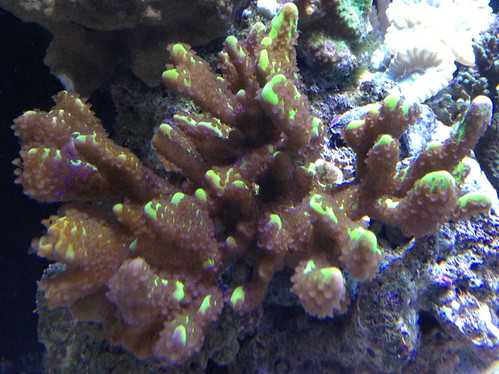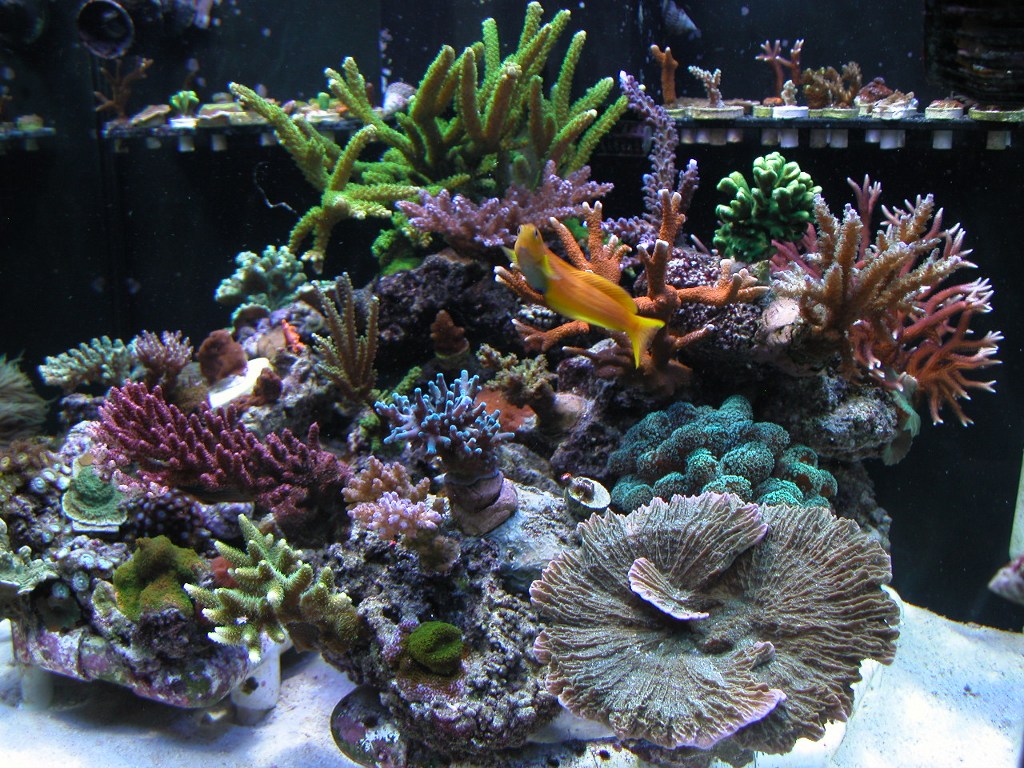To answer you question, for SPS corals, I have Red Planet, Blue Milli, Crayola Acro, Hawkins Enchinata, Garf Bonsai, Green Slimer, Rainbow Stylophora, Poccilipora, few wild Acros, Spongodes Monti, Confusa Monti, rainbow monti, and sunset monti in the tank in the video. That tank was never supposed to become an 'SPS tank' but my other tank has gone through so many ups and downs and I lost a lot of corals in the process that I decided to frag them and move some to this tank, and to my surprise they all regained their health, color, and polyp extension when placed in this 'high phosphate' tank. Here are a couple pictures of the spongodes, first one is encrusting up the back wall now and it only took a few days to attach and start growing up the wall. Second picture is the colony on the left of the tank in the video, which gets under 80 PAR of lighting, and it looks and grows great. That is my litmus test for testing my tanks, do the corals look healthy? If so, it is doing good regardless of what the parameters are or what the experts say I have to keep parameters at.


SPS corals get most of their food from planktonic feeding, not photosynthesis. There is a reason SPS corals have so many polyps vs LPS corals, they eat a ton.
The tank in the video, that was my 'free' tank, as in pretty much everything in it was free, including the tank, stand, and sump. I spent a few dollars making an ATS for it, filled it with water, and called it a day. I run 50w of LEDs over a 4' tank and grow acropora on the sandbed. I get better much growth with little light, lots of feeding, and no skimming than I do on my other tank that has 2x the light and other filtration that removes food. I don't worry about parameters at all because I have chased that rabbit for years on my other tank, and today it looks much worse than the tank I just 'set it and forget it'. I have tested parameters out of curiosity, but I don't do anything to try and fix anything. As long as the tank looks healthy I let nature maintain the tank for me, ie. bacteria and algae.
In the comments in that article I linked you will see Stylophora corals were also tested in a previous study, and those are considered, like Acropora, to be one on the more difficult side when compared to easy SPS corals like montipora or poccilipora. This is not new information, it is just information the 'old school' reefers choose to ignore because it goes against what they were taught 20 years ago.



 Reply With Quote
Reply With Quote




















